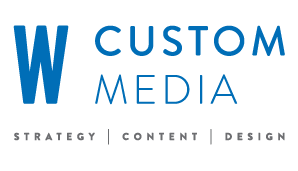
Planning a company event is not just about picking the menu and finding keynote speakers. Events are a content goldmine. There’s a wealth of content to capture from speakers, handouts, Q&A sessions, social media, and multimedia recordings. This provides rich marketing opportunities before, during, and long after the event.
Before the event
Months before the event, you need to create solid content strategy. Start by setting goals for your social media strategy. Then determine the appropriate platforms for marketing, find content sources, create an editorial calendar, and designate someone to manage the entire project.
Once all logistics are in place, pick a memorable and unique event hashtag for your social platforms. Conduct some research on which ones to uses, how many to use, and where to use them. Promote the event by encouraging speakers, sponsors, influencers, and company employees to use the hashtag when referencing the event.
During this year’s Best of Washington, Washingtonian used images from the previous year to garner attention to the return of the upcoming annual event.
Prime social channels by sharing articles related to the subjects of your event. Write related content for your blog and invite speakers to write as contributing authors. We also suggest creating short, 30-second to -minute videos with each speaker and related focus areas. Don’t forget to engage your key audiences. Start conversations online by providing questions, and polls to gauge their interest and enthusiasm.
Invest in imagery such as pre-event photography, custom logos, and infographics to share online. Instagram or Snapchat videos of the event set-up, swag, food, décor, and other behind-the-scenes peeks to draw excitement as the event approaches.
During the event
First things first, capture as much audio and video of the event as possible! You’ll be able to feature it on your website and mobile app afterwards. Here’s our quick day-of run down for events.
- Always use your hashtag when promoting.
- Post signage that is easy to read, eye-catching and branded to give your event an unique identify.
- Request that your speaker remind people to use the hashtag in posts.
- Encourage the audience to share their thoughts and photos via social media – to tweet questions, to use hashtags, and to participate in the conversation.
- If appropriate, provide your attendees with marketing collateral including all your social media handles and event information.
It’s important to note that event coverage should not be left solely up to your guests. By assigning a team member or two to live-tweet short takeaways and interesting quotes from the event ensures you’ll capture the essence of the event. Share images of speakers, the crowd, a telling chart or infographic to highlight the energy in the room. Snapchat, Instagram Stories and live-tweeting engage your audience both in attendance and online. Use your guests and speakers’ @mention to expand your event’s reach by tapping into their followers and tie it all back together.
After the event
Whether they participated in-person or virtually through web stream, thank everyone for coming via social media. Continue to show pictures and short video highlights. Schedule blog posts on the various event topics, but be sure to include an overall recap, comments, questions, and other mentions that occurred during the event. Ask for feedback from attendees to serve as a guideline for improvement next year.
Share handouts and presentations online specifically highlighting slides that sparked debate or discussion. Make sure you post visually engaging content to spark interest and conversation.
Consider hosting a mid-year online forum with the same speakers through a Google Hangout or other means. This will keep the event and your brand fresh in the audience’s mind. Before long, you’ll be prepping content for your next event!
